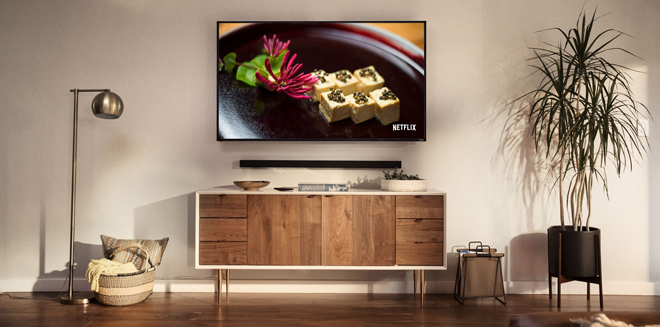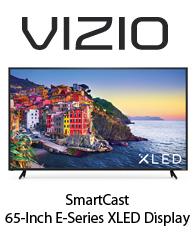VIZIO SmartCast E-Series 65" 4K HDR XLED Display
Overview -PROS
-Good overall picture quality
-HDR10 support
-Solid full-array local dimming capabilities
-Competitive bang-for-your-buck pricing
CONS
-HDR performance is limited
-No Wide Color Gamut or Dolby Vision support
-SmartCast and HDMI CEC/ARC are buggy at times
-Currently no HDR playback for apps other than Netflix
-No integrated TV Tuner
INTRO
While the absolute best picture quality will always be reserved for displays with appropriately premium price tags, a budget-priced 4K TV doesn't always have to mean bargain basement performance.
Case in point: VIZIO's E-Series SmartCast Ultra HD Display.
Serving as the company's entry-level HDR capable model, the set couples advanced picture quality features like local dimming and high dynamic range with VIZIO's SmartCast streaming platform and a 65-inch screen size -- all for under $900.
And though some understandable tradeoffs have been made here and there to reach such an affordable price point, the E-Series proves to be a very capable 4K display with impressive bang-for-your-buck value.
SPECS & DESIGN
The 2017 E-Series SmartCast XLED HDR Display lineup ranges in size from 55-inches to a whopping 80-inches. The 65-inch model reviewed here features a VA LCD LED panel with a 16:9 aspect ratio, an Ultra HD resolution of 3840x2160, an effective refresh rate of 120Hz, a 5M:1 dynamic contrast ratio, and a viewing angle of 176°/176°. In addition, the set offers full-array local dimming with 12 active zones.
HDR10 capabilities are included as well but the display does not offer wide color gamut support or Dolby Vision. The panel also features integrated decoding for HEVC (H.265) and VP9 UHD content along with VIZIO's Spatial Scaling Engine for upconverting lower resolution material to 4K.
Aesthetically, the set is pretty standard with a black plastic bezel, a semi-gloss finish screen, and separate feet stands on the left and right. With the stands attached, the device measures 57.64"W x 35.66"H x 11.42"D, and weighs 51.15 lbs. Meanwhile, the panel itself is about 3.11" deep at its thickest point. Though the unit lacks the premium style, build, and thin profile of higher-end TVs, the display's functional design is still pleasing and sturdy enough for its price range. In addition, the panel is also wall mountable with VESA compliance.
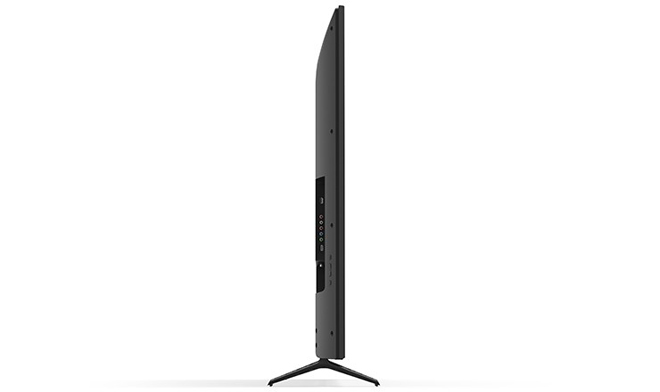
Three HDMI ports are located on the bottom back of the display, along with an Ethernet port, a digital audio out (SPDIF), and an analog audio out. One more HDMI port is located on the left side of the panel, along with a component input and a USB port. Only one of the back video inputs is full bandwidth HDMI 2.0a with ARC, while the other three HDMI connections are 1.4. It should also be noted that, like other VIZIO SmartCast displays, the device does not include an integrated TV tuner, meaning that users will need to purchase a separate tuner to receive OTA broadcasts.
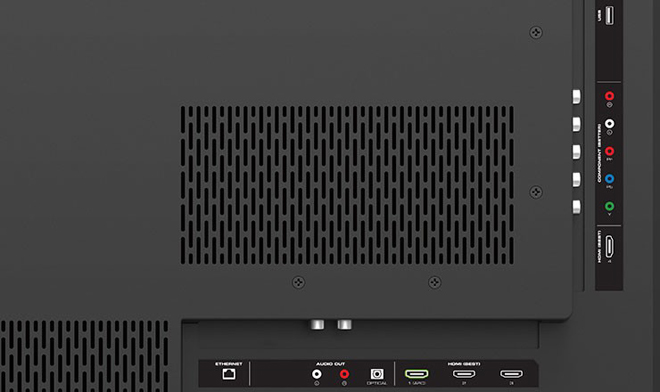
Under the hood, the display is powered by a V8 Octa-Core processor and uses the VIZIO SmartCast TV platform. 802.11ac Dual Band Wi-Fi and Bluetooth 4.1 LE connectivity are included as well. In addition, the package also comes with a standard click-button remote control with easy access to power, menu, input, volume, and other essential functions. And alternatively, users can also download the SmartCast Android/iOS app to use their mobile devices as a remote.
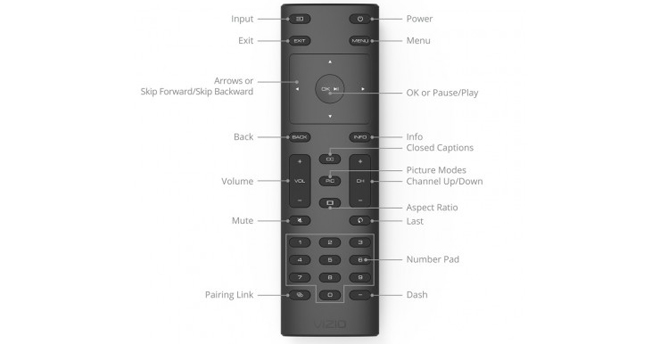
Finally, for what it's worth, the display includes integrated stereo speakers that sound about on par with other models in this class -- which is to say, the tiny audio quality is doable if need be but you're still definitely going to want to complement the E-Series with a real surround sound system or sound bar.
SETUP
After unpacking the box, setup is pretty simple. Users just need to screw in each of the foot stands and then plug the display in. Once booted up, the device will prompt customers to configure languages and the system's internet connection.
When it comes to placement, the screen's semi-gloss finish does a decent job of reducing reflections but users will still want to position the display in an area where direct sunlight won't hit it. Likewise, your primary viewing location should be as close to dead center to the panel as possible, as color and contrast do start to wash out a little when sitting a bit toward the left or right of the screen and considerably more when seated at a more extreme angle.
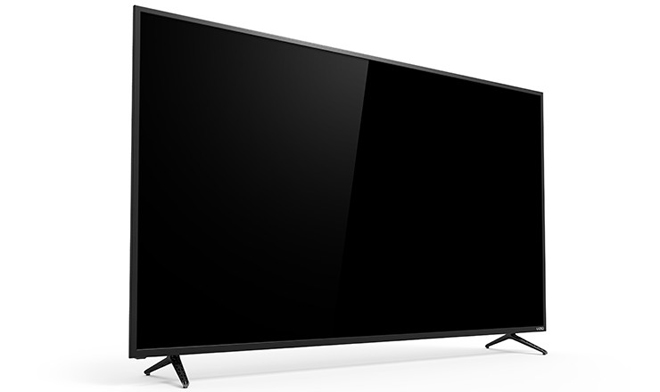
For review purposes, I used the E-Series with an Onkyo TX-NR555 AV receiver connected to the display's HDMI ARC (audio return channel) input, allowing the receiver to pass-through full bandwidth 4K Ultra HD HDR content to the screen and the display to transmit audio from its apps to the receiver.
With ARC and CEC (consumer electronics control) enabled in the menu, the display automatically recognized the receiver and correctly passed streaming audio to the Onkyo. Likewise, thanks to CEC, I could even use the VIZIO remote to control the receiver's volume.
With that said, I did run into a few quirks related to ARC and CEC. When using apps like Netflix through the SmartCast platform there would be an audio dropout of about 2 – 3 seconds when first starting a title or resuming playback after pausing or fast-forwarding/rewinding. For comparison's sake, my Roku 3 and LG Ultra HD Blu-ray player do not have notable dropouts like this when playing movies through my receiver.
Likewise, there were times when the CEC support would randomly stop working and suddenly the VIZIO remote would no longer control the receiver's volume. I'm not sure why this happened, but the issue would usually correct itself eventually. In addition, I ran into some more concerning issues when trying to use the ARC feature with a Yamaha YAS-207 sound bar (detailed here in this review), but I'm not sure whether that's a fault of the VIZIO or the sound bar. Either way, if users find the ARC option to be buggy for whatever reason, the TV's digital audio out works just fine with no problems.
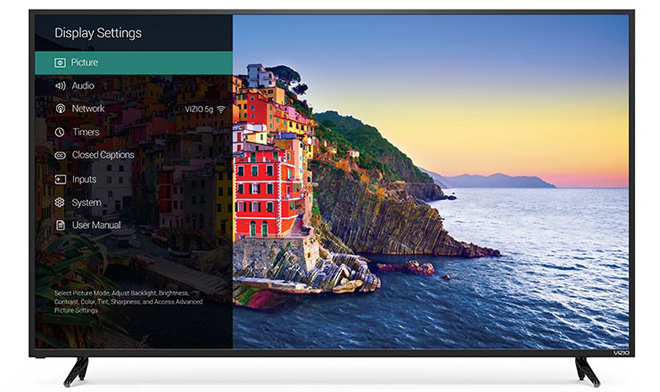
Moving on to video, the E-Series offers a nice selection of calibration options and pre-sets, allowing users to adjust brightness, contrast, color, backlight, motion, and other picture settings to their liking. For the most accurate home theater settings out of the box, users should opt for the Calibrated Dark mode while adjusting sharpness down to 0 and disabling all other unnecessary processing enhancements and enabling the Xtreme Black Engine local dimming feature. This will offer pretty faithful SDR playback even without a more detailed professional calibration. Sadly, there are limits as to how accurate the E-Series is capable of presenting HDR material (more on that below), but the default settings should be a good starting point.
SMARTCAST TV
Offering a notable upgrade from the company's 2016 SmartCast platform, the updated SmartCast TV system here now offers the best of both worlds -- enabling users to cast various streaming apps from Android/iOS mobile devices or computers to the display, along with the option to access select apps directly from an on-screen menu on the big screen without the need for a separate gadget.
Apps available from the display's own interface include Netflix, Amazon Video, iHeart Radio, Hulu, VUDU, Crackle, XUMO, Pluto TV, and Fandango Now. Load times for the SmartCast menu itself could be a bit slow, with one irregular boot taking as long as several minutes. Thankfully, in general, loading the app screen was fairly quick and painless. Likewise, accessing the individual apps was smooth and navigation within each service was pretty efficient, though there could be some lag here and there. Actual playback was essentially flawless with support for 4K and Dolby Atmos audio bitstreaming to my receiver when available.
Unfortunately, Netflix seems to be the only app that currently offers HDR on the E-Series. Though Amazon, Fandango Now, Google Play (via casting), and YouTube (via casting) all provided Ultra HD support, none of their HDR titles actually played back in HDR mode. In addition, since VUDU only offers Dolby Vision, its HDR titles also only played back in SDR 4K. Hopefully, VIZIO will update the platform soon with support for high dynamic range from more apps.
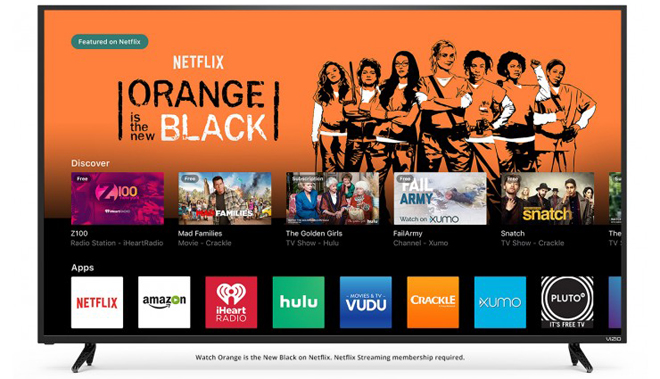
Switching gears from the on-screen menu to a casting experience from my smartphone and laptop also worked pretty well, but I did run into more glitches using this method. In general, apps like YouTube, Google Play, and Movies Anywhere all cast to the screen without any notable issues. Users simply need to load the app on their mobile device (or open the webpage on their computer browser), hit the cast button, and then select the VIZIO display. The desired video will then start playing on the big screen.
Unfortunately, there were times when my smartphone and laptop would stop detecting the VIZIO display which would result in the cast button disappearing as an option. Though this happened a bit more frequently than I would have liked, resetting the display seemed to fix the issue when it occurred. In addition, some apps were prone to technical issues of their own. For instance, I often got sound but no picture when trying to cast certain shows from the Fox Now app. Thankfully, the majority of the services I tested worked without any major problems.
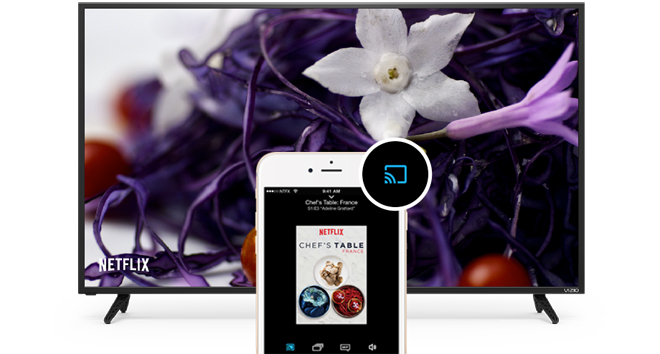
Overall, I wish the mobile SmartCast experience was a bit more reliable, but the on-screen interface is a great new addition to the platform. Though there's definitely still room for improvement (more integrated apps on the big-screen menu and more HDR support, please), SmartCast TV is shaping up to be a robust and versatile streaming solution.
LOCAL DIMMING
One of the main selling points of the E-Series is its full array local dimming feature. Dubbed Xtreme Black Engine here by VIZIO, this technology features LED light sources positioned in multiple dimmable zones across the entire panel, allowing the screen to brighten or totally darken in selected spots to coincide with the content being played. This enables the display to achieve deeper black levels which help to create a better overall picture.
With that said, the effectiveness of local dimming is based largely upon how many zones a manufacturer is able to implement in the panel (in general, the more the better). The 65-inch E-Series uses a grid of just 12 zones -- which is a pretty low number compared to many higher-end models. For comparison's sake, VIZIO's step-up M-Series offers 32 zones and its flagship P-Series has 128 zones.
Based on this low number, I was actually a little worried about how well the dimming feature would work on the display. But after reviewing the set, I've come away pleasantly surprised. Though there are some compromises that arise as a result of the limited zone number, the overall effect is still pretty good.

(Above image is for illustrative purposes only.
It does not accurately represent the number of LED zones on the E-Series.)
While the TV's native contrast ratio and black levels are solid for an LCD in this price range even without local dimming turned on, activating the Xtreme Black Engine pushes the set's black levels down even further, creating a deeper, inkier appearance that eschews the grayer look the set has without it. The blacks never quite disappear into the background of an all-dark room the way they would on an OLED or a higher-end LCD set with more zones, but they're comparable to late generation mid-range plasmas. Likewise, black uniformity is very strong, with only a negligible hint of increased brightness toward the corners of the panel when an all-black screen is displayed.
Of course, with only 12 zones there are some trade-offs that come from the improved black level performance. Most notably, there are times when viewers might be able to see specific portions of the screen dim and fluctuate in brightness as the zones are activated. This is most evident when watching specific test patterns designed to evaluate local dimming performance, such as a clip with a scrolling vertical line or a moving white ball/square across a black background. When viewing these tests, fairly large quadrants of the screen around the ball/square will clearly bloom and brighten up as the objects move around the display. In addition, the ball/square will also slightly pulsate as it transitions from one dimming section to the next. Likewise, the dimming zones also have the effect of reducing the overall brightness of the moving objects compared to how they look when the feature is turned off.
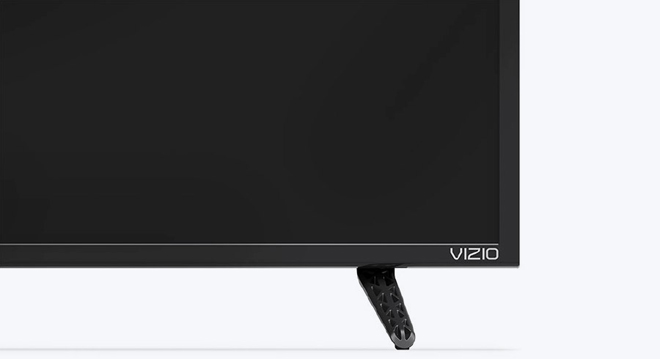
During actual content, however, these effects are far less noticeable than I thought they would be. In fact, I didn't see the dimming in action at all during the majority of the movies and TV shows I watched. Sure, there were times when bright objects moving in dark scenes would create a pulse in luminance or visible blooming, but this was usually very subtle. Talks shows were particularly prone to this when guests would gesture in front of dark backgrounds, causing slight increases in brightness to become apparent in the zones around their hands. End credit sequences also showed off this issue to a greater degree, as horizontal bands of increased brightness would become visible when blocks of white text scrolled down a black screen.
It should also be noted that when toggling the Xtreme Black Engine on and off during HDR content, I noticed that smaller highlights in dark scenes were actually reduced with the local dimming on. This is likely because the 12 zones are just too big to offer the accuracy needed to precisely brighten just these areas. But while this side-effect did lessen the impact of some HDR content, I found that the inkier blacks were a worthwhile tradeoff. With that in mind, I ended up preferring to leave the Xtreme Black Engine on for all of my viewing.
HDR PERFORMANCE
Though the 65-inch E-Series does include HDR10 support, there are two notable caveats related to the set's high dynamic range performance that buyer's should be aware of.
First, the display is only able to achieve a peak brightness of about 250 nits, and though that is more than the 100 nits standard used for SDR displays, it pales in comparison to the 600 – 1,500 nits that most mid-range and high-end HDR displays are capable of.
Second, the E-Series does not include wide color gamut capabilities, offering coverage for only about 75% – 80% of the P3 color gamut used in most currently available HDR content. This means that the set will only be able to fully display standard Rec. 709 colors found on Blu-rays and other SDR sources.
Coupled together, the standard color gamut and low nit output limit how accurate and bright the E-Series is capable of displaying HDR10 content.
But, that's not to say that HDR material actually looks bad here. On the contrary, the display's HDR mode is still quite easy on the eyes offering a noticeably punchier quality compared to SDR playback.
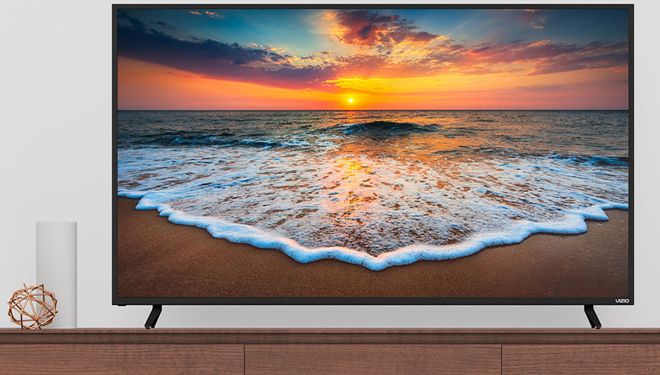
To test the display's HDR10 performance, I watched a variety of Ultra HD Blu-ray discs and Kaleidescape 4K HDR downloads, including titles like Spider-Man: Homecoming, The Fate of the Furious, The Man from U.N.C.L.E., The Amazing Spider-Man 2, Pacific Rim, Fantastic Beasts, Batman v Superman, Billy Lynn's Long Halftime Walk, Léon: The Professional, La La Land, Ex Machina, and Logan. Likewise, I also watched several Netflix shows in HDR, including Stranger Things.
Some titles were, of course, more impressive than others, but overall clarity was fantastic and despite the set's fairly limited HDR brightness levels, highlights still came through with some decent intensity. The red glow of Superman's heat vision and various explosions during the climactic showdown in Batman v Superman were especially striking, giving the image an added sense of depth and pop.
The torture scene from The Man from U.N.C.L.E. was also a good showcase for the TV's impressive contrast. As Henry Cavill's character is tied up in an otherwise pitch black room, a lightbulb ominously sways back and forth, shifting bright bursts of light throughout the shadowy area -- and the TV maintained strong whites and inky black levels thanks to its local dimming without any notable issues.
Colors were also very bold in HDR mode, and though the set does not technically support a wide color gamut, the color palette often looked markedly different when viewing movies in HDR compared to their SDR counterparts, with much richer primaries. With that said, since the panel can't actually cover the P3 color space, this apparent increase in saturation is not as accurate or realistic as one would get on a TV with genuine WCG capabilities.
On that note, there were times when HDR colors tended to bleed a little or carry an unnaturally enhanced quality. This was particularly true of the reds in Spider-Man's suit in Spider-Man: Homecoming. Likewise, skintones in movies like Léon had a comparatively orange, almost sunburnt look to them that the SDR versions did not have.
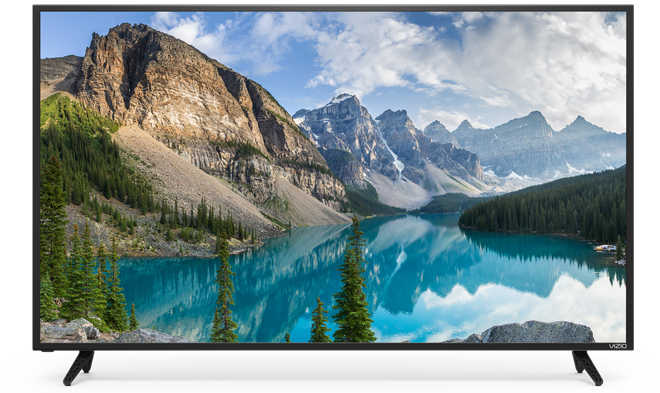
At its best, the display's HDR10 mode made SDR content look dull and flat by comparison. And at its worst, the panel's high dynamic range implementation created an overly harsh and inaccurately exaggerated image. Thankfully, most material veered more toward the former. With that in mind, despite some key shortcomings, I still preferred to watch content in HDR when available.
SDR PERFORMANCE
The E-Series' HDR performance might have its limitations, but when it comes to SDR playback the display is really spot on. To test out the set's SDR performance, I sampled a variety of 1080p Blu-ray discs like Baby Driver, Blade Runner, Wall-E, Guardians of the Galaxy, Rogue One, and The Avengers, along with HD and 4K streaming titles from Netflix like Sense8 and The Unbreakable Kimmy Schmidt, and 4K digital downloads from Kaleidescape like Lawrence of Arabia, On the Waterfront, and Taxi Driver.
Throughout all of my demo material the display offered a nicely balanced and oftentimes gorgeous image. Of course, certain videos are always going to be more impressive than others, but the set presented SDR movies and TV shows with sharp detail, vibrant yet still natural colors, and ample brightness for both dark and light environments.
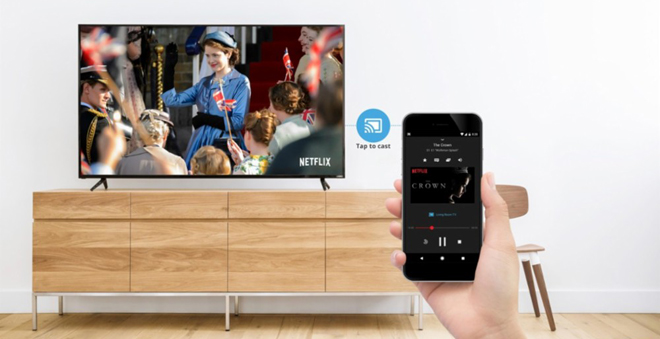
Clarity was especially striking in 4K content like Sense8 and Lawrence of Arabia, realizing each title's breathtaking locations with intricate fine texture and dimension. Upscaled Blu-ray discs and HD streams also looked wonderful, rendering the rain-soaked streets of LA in Blade Runner with deep blacks and neon bursts of color.
In fact, outside of some light blooming here and there from the local dimming, I really didn't detect any notable performance issues with SDR content. Likewise, beyond more critical home theater viewing, I also used the display for a lot of casual watching throughout my evaluation period as well, and whether streaming YouTube clips or tuning into live news reports on CNN, the E-Series proved to be a great match for all of the content I threw at it.
FINAL THOUGHTS
At a current sale price of $850 (MSRP $900), the 65-inch VIZIO E-Series XLED HDR Display packs in a lot of value, offering a couple of advanced features that are usually reserved for more expensive models. But while the set's overall performance is quite strong, there are some key trade-offs that come with the bargain pricing.
On the one hand, we do technically get full-array local dimming and HDR10 support. But on the other, these features are implemented with only 12 active zones, a low peak nit output, and no wide color gamut capabilities.
Still, despite limits as to how accurate and bright HDR content can look here, the display is nevertheless capable of deep blacks and some relatively punchy highlights. Likewise, SDR content looks great and 1080p material is upscaled well. I ran into some occasional quirks with SmartCast mobile streaming and HDMI ARC/CEC, but performance was mostly stable and problem-free during the two months I spent with the display. For a 65-inch set in this price range, there really aren't many comparable options to the E-Series when it comes to overall picture quality.
For users who want a big-screen 4K set but who don't want to pay extra for more advanced HDR or wide color gamut features, this is a fantastic entry-level model. With that said, at current sale prices buyers can actually opt for the step-up M-Series with expanded colors and brighter nit performance for just $150 more (we're hoping to get one in for a full review soon, so stay tuned).
Bottom Line: The E-Series is recommended if you're on a budget and HDR performance is not your top priority. Otherwise, spend that $150-200 more to upgrade to the 2017 VIZIO M-Series, which adds more FALD zones, Dolby Vision, and wide color gamut.
